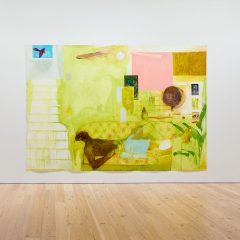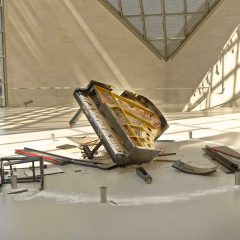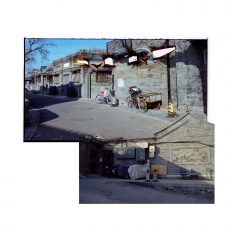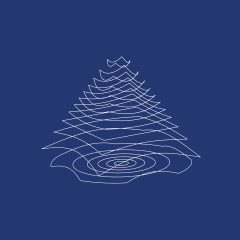In the works of Angela de la Cruz and Rashid Rana currently on display at Lisson Gallery in London, there is more than meets the eye. Both artists beckon the viewer to reconsider their works’ seemingly simple form and look across their oeuvre to the rich ideas that lie beneath.

In her first solo show at Lisson since 2004 (and since last year’s Turner Prize nomination), de la Cruz presents a selection of entirely new pieces (all made in 2011) that strongly demand attention. While Mini nothing (cream) sits crumpled in a painted canvas pile on the shelves with the exhibit publications, Hung 16 (cream/blue) truly embodies the state of a stretched canvas, re-stretched on an awkwardly sized support and appearing on the verge of bursting.
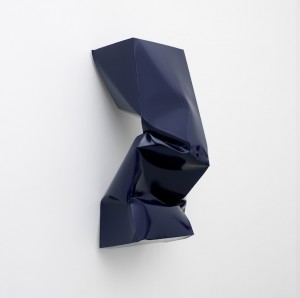
On the first floor of the 52-54 Bell Street location, the canvas of Deflated (white) hangs on the wall without underlying stretcher like a limp unworn coat. Downstairs, the dynamic series of Compressed sculptures – impacted, mangled volumes of aluminum – look alive and in action. All of de la Cruz’s painted surfaces shine in a high self-reflective gloss; her work overall very confidently challenges the physical structures of art. Yet for all its strength, the work is also spotted with humour. Work with such nuance is simply a pleasure to contemplate and reconsider again and again.
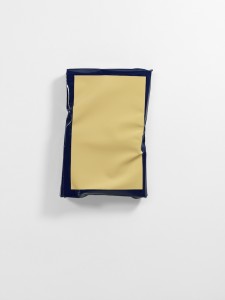
In his work, Rashid Rana, an eminent contemporary artist from Pakistan, embraces the digital era yet also brings it into confrontation with the physical truths of real life. At first glance, Desperately Seeking Paradise II (2010-11) appears to be nothing but a mirror. Farther into the room, the slanted metal grid reveals a countless number of small little images of rural homes. Stepping back from the structure, the small images come together to form a skyscraper-ed cityscape. This reflective (both quite literally and metaphorically) piece confronts rural reality with urban fantasy.
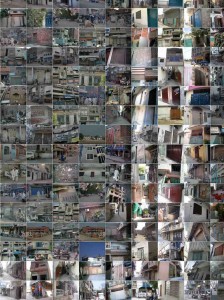
Rana ultimately provides the viewer with a sense of loss: in the physical experience of his works of art from near to far, meaning and identity fall away. This idea is perhaps best demonstrated in his Language Series canvases: an innumerable mass of small blocks of text (photographic fragments of commercial signs in Arabic and English) comes together (or rather fails to come together) to create an image of undecipherable static. Rana has gone beyond his previous figurative ‘collages’ (forming Persian carpets from images of slaughter) to step into the nonsense of the overload of imagery in the 21st century. His conglomerations of images, which now fail to form a decipherable whole (Paradise aside), symptomatically echo the overload of virtualities and realities of contemporary global reality.
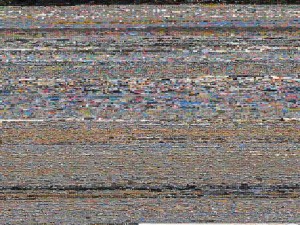
Lisson Gallery, thus, presents a very strong duo of artists for its current show. De la Cruz challenges the very physical structure of painting and sculpture, creating a series that incites a dialogue between her works. For his part, Rana plays with levels of perception while giving form to the tensions between reality and virtuality, the urban and the rural, between structure and content.
Rashid Rana and Angela de la Cruz are on exhibit at Lisson Gallery (29 & 52-54 Bell Street) until April 30.


